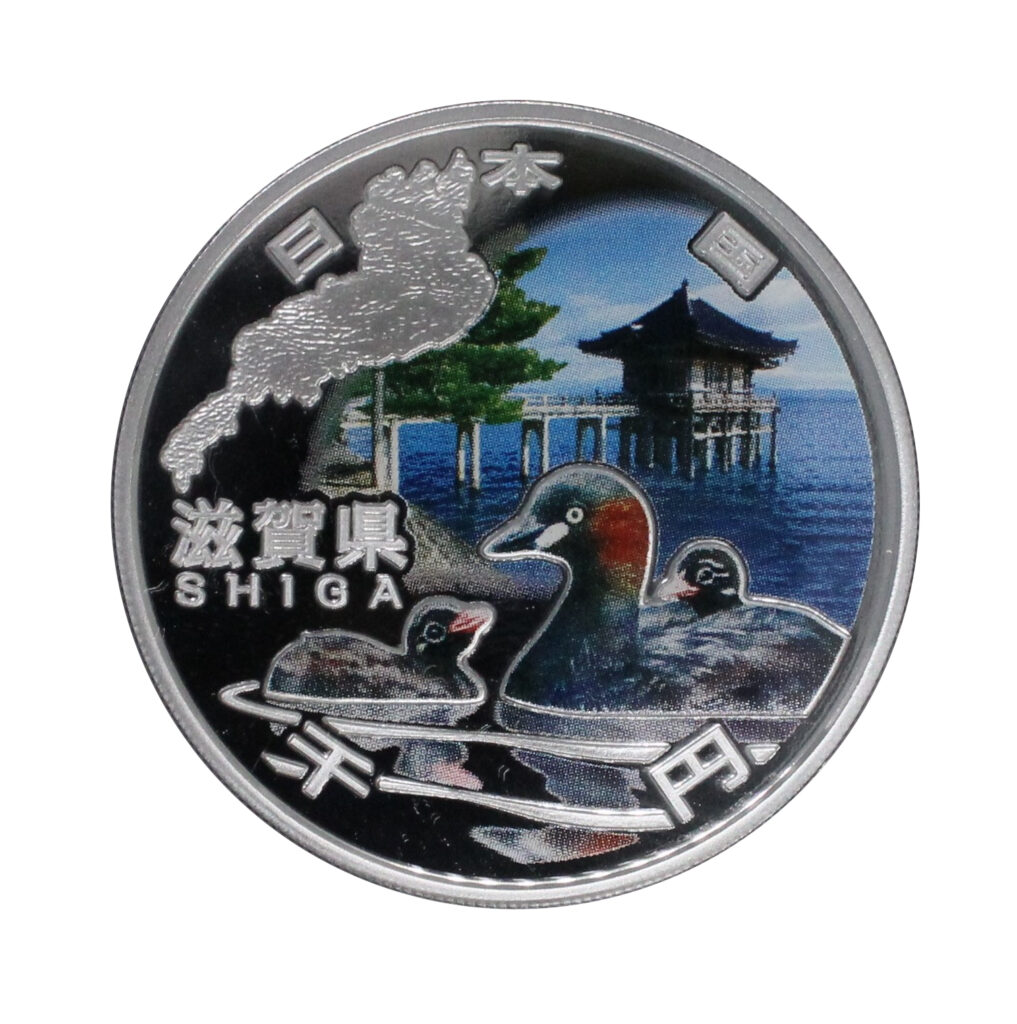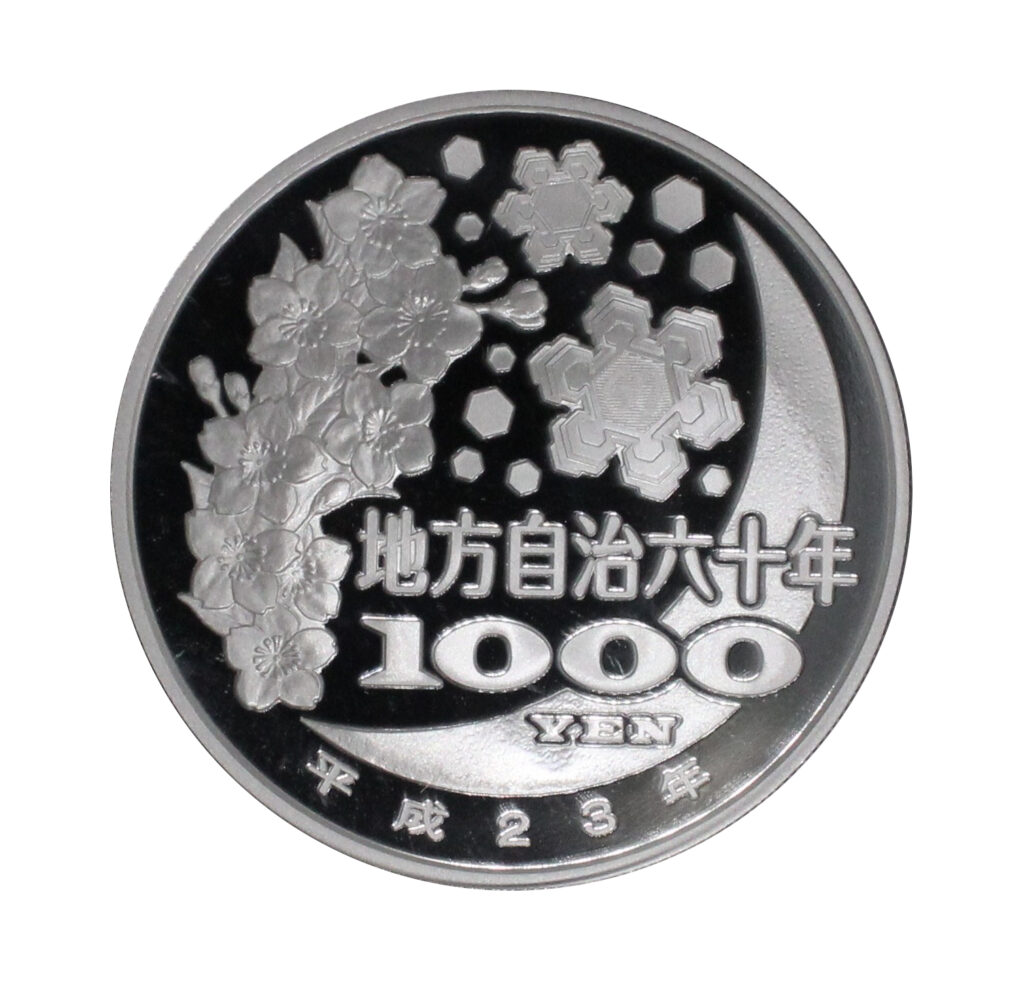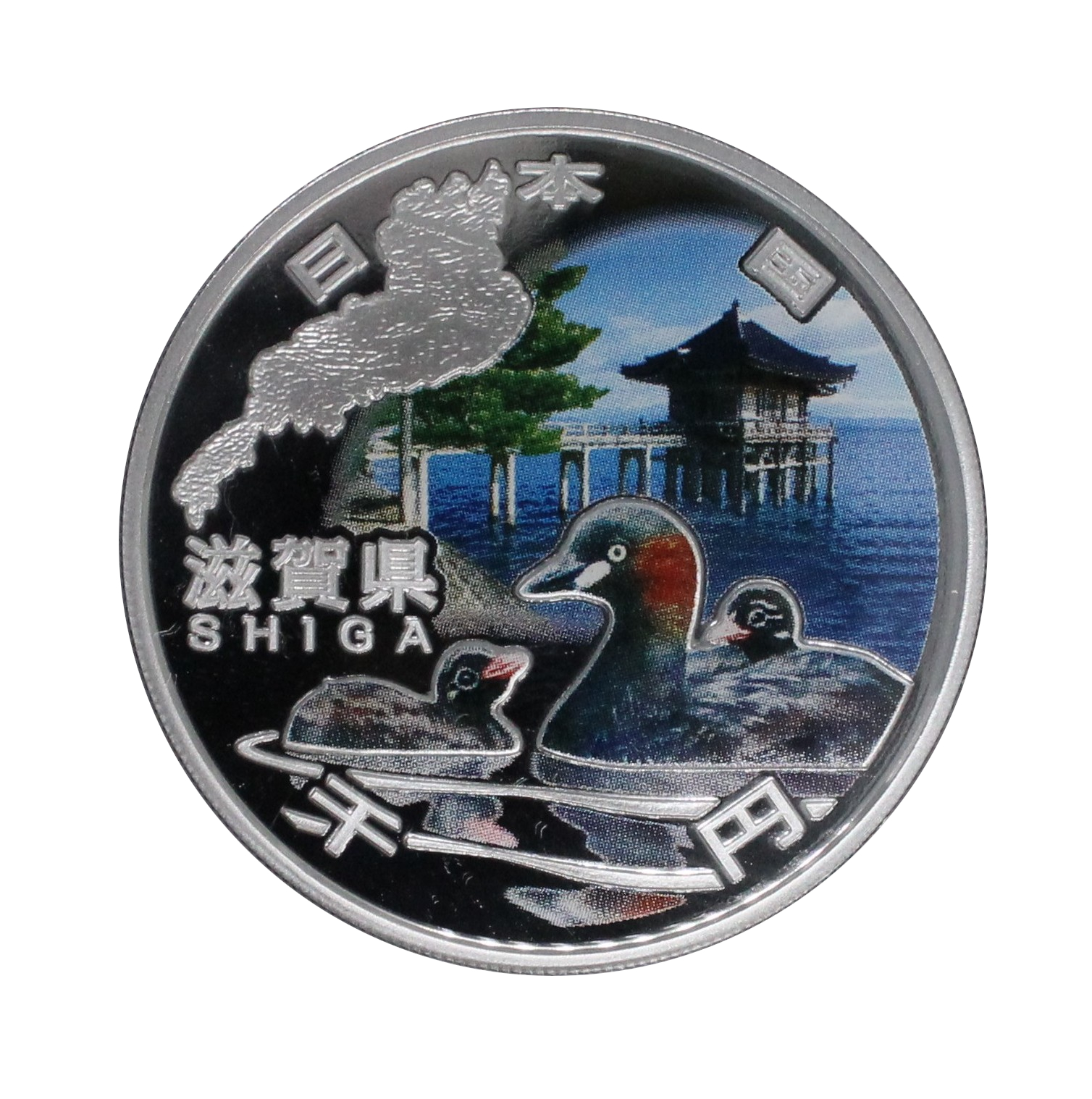JNDA# 07-17


| Material | Silver |
| Composition | Pure Silver |
| Weight | 31.1grams=1.09oz |
| Diameter | 40mm=1.57in |
| Year of Production | 2011(Heisei 23 year) |
These silver coins were issued to commemorate the enforcement of Japan’s Local Autonomy Law.
Each of the 47 prefectures has its own unique design.
The coin of Shiga Prefecture features designs of Lake Biwa, the prefecture’s bird, the Little Grebe(Kaitsuburi), and the scenery of the Floating Hall(Ukimidou 浮御堂) on Lake Biwa.
Lake Biwa 琵琶湖
Japan’s largest lake. It is an ancient lake believed to have formed about 4 million years ago and settled in its current location about 400,000 years ago.
Numerous endemic species, found only in its associated waters, have been confirmed. It serves as a vital water source supporting the survival and economic development of approximately 14 million people in the Kinki region.
Little Grebe (Kaitsuburi)
A bird about 25 centimeters long inhabiting lakes and marshes with slow currents. When chicks are small, they may be carried on the parent’s back for protection. Historically called “Nio,” it is considered the origin of Lake Biwa’s ancient name, “Nio no Umi” (Sea of Nio).
Floating Hall (Ukimidou 浮御堂)
Kaimonzan Mangetsuji (海門山満月寺) Temple, home to the Floating Hall (Ukimidou 浮御堂) , is said to have been founded in the mid-Heian period by the monk Genshin (恵心僧都源信) to pray for lake safety and other blessings.
The Floating Hall (Ukimidou 浮御堂) on Lake Biwa, along with the Seta Karahashi Bridge, is one of the subjects of the “Eight Views of Omi” and represents a scenic spot in the southern part of Lake Biwa. The Floating Hall (Ukimidou 浮御堂) is registered as a National Tangible Cultural Property (Structure).


